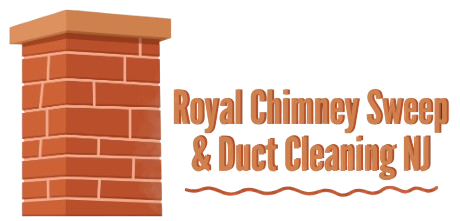A focused inspection checklist helps Fair Lawn, New Jersey homeowners catch dryer vent issues early, prevent lint fires, and maintain efficient drying. Use this guide to evaluate your system from the laundry room to the exterior termination, identify risks, and plan corrective actions. If you prefer a comprehensive service, you can book professional dryer vent cleaning and use this checklist to confirm the results.
Safety and setup
- Power and gas: Unplug the dryer; shut off gas for gas models before inspecting connections.
- Workspace: Clear a safe area around the dryer. Wear gloves, eye protection, and a dust mask.
- Tools: Flashlight, vacuum, screwdriver or nut driver, and a flexible inspection/brush kit.
Appliance-side inspection
- Lint screen and housing: Clean the screen and check for residue. Use a narrow brush to remove lint inside the housing.
- Back panel and vent collar: Look for scorch marks, discoloration, or melted plastic—signs of overheating or poor airflow.
- Power cord and gas line: Inspect for wear, kinks, or damage. Ensure the gas shutoff is accessible.
Transition duct review
- Material: Confirm semi-rigid or rigid metal. Replace plastic or thin foil ducts.
- Length and shape: Keep the path short with a smooth, wide bend. Avoid kinks and crushes.
- Connections: Use clamps; avoid screws that protrude inside the duct and catch lint.
In-wall duct evaluation
- Route mapping: Sketch the approximate path and count elbows. More turns increase lint accumulation.
- Seam integrity: During cleaning, feel for air leaks along accessible runs. Leaks reduce airflow and create dust issues.
- Fire safety: Ensure the duct passes through the shortest, straightest feasible route with metal construction.
Exterior termination inspection
- Hood condition: Confirm the damper opens fully and closes when idle. Avoid fine-mesh screens that trap lint.
- Clearance: Keep shrubs, leaves, and snow away from the hood to ensure free movement.
- Pests: Look for nesting materials, webs, or droppings that indicate intrusion.
Operational checks
- Airflow test: Run the dryer on a timed cycle with no clothes. At the exterior hood, feel for strong, steady air.
- Temperature: The dryer top should be warm but not excessively hot.
- Odor and noise: Listen and smell for burning, musty odors, or rattles that may indicate restrictions or loose parts.
Red flags that require immediate action
- Multiple restarts or extended dry times beyond normal.
- Lint accumulation around the hood or back of the dryer.
- Damper that barely opens or sticks during operation.
- Visible damage to the transition duct or signs of scorching.
Documentation and follow-up
Record the date, findings, and any parts replaced. Take photos of the transition duct and exterior hood so you can compare conditions at your next inspection. Note any elbows or long vertical sections that consistently trap lint, and plan layout improvements when possible.
Upgrades that improve safety and performance
- Replace substandard hoses with semi-rigid or rigid metal.
- Reduce elbows and shorten the route where feasible.
- Use HVAC-rated aluminum foil tape on metal joints; avoid cloth duct tape.
- Install a proper dryer vent hood with a back-draft damper; avoid fine screens.
Seasonal considerations for Fair Lawn
- Winter: Watch for ice near the foundation and brittle old hoses that can crack when moved.
- Spring: Check for bird or insect activity at the exterior hood.
- Summer: Humidity can make lint adhere; consider more frequent inspections if dry times increase.
- Autumn: Clear leaves and debris to maintain full damper travel.
Frequently asked questions
Q: How often should I perform this inspection? A: Do a full inspection annually, or semiannually for large households or heavy laundry use.
Q: What is the safest transition duct? A: Semi-rigid or rigid metal. Avoid plastic and thin foil that crush easily and can burn.
Q: Can I add a screen over the hood to keep pests out? A: Use a proper dryer vent hood with a damper; screens trap lint and become a hazard.
Q: My vent route is long—what should I do? A: Consider layout changes to shorten the path, and schedule periodic professional service to maintain airflow.
Q: The dryer still runs hot after cleaning. Why? A: Look for a concealed kink behind the dryer, a sticking damper, or lint on the blower wheel. If issues persist, have a technician evaluate the system.
Put your inspection into action
With a methodical inspection, targeted upgrades, and seasonal awareness, you can keep your dryer vent safe and efficient throughout the year. When you want a thorough, documented result without the effort, schedule expert dryer vent cleaning for your Fair Lawn home and enjoy reliable airflow, faster drying, and peace of mind.
